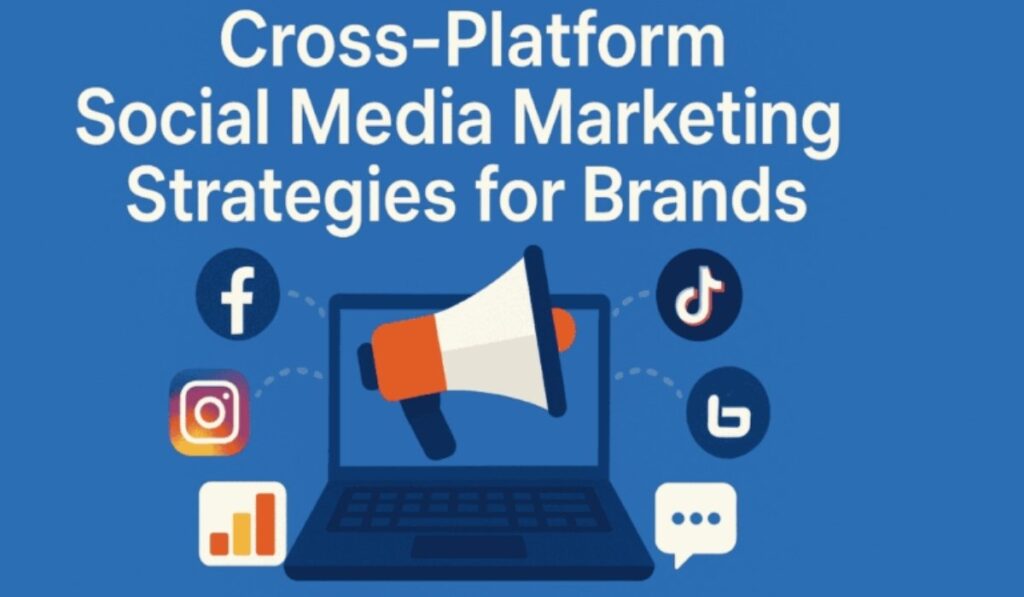In the digital world, where perception often matters more than reality, a brand’s social media strategy can make or break its reputation. One misstep can spiral into a public relations nightmare, and that’s precisely what happened in the infamous Social Media Saga SilkTest.
Once touted as a rising digital brand with innovative ideas, SilkTest found itself entangled in a series of social media blunders that sparked controversy, ridicule, and public backlash. Social Media Saga SilkTest However, what makes this saga unforgettable isn’t just the mistakes—it’s the way SilkTest turned the tide with a clever, authentic comeback that earned the public’s respect. This blog post will unpack the saga in detail, highlighting key lessons for brands and marketers alike.
The Rise of SilkTest: A Promising Start
Social Media Saga SilkTest entered the market as a trendy tech brand, initially gaining attention for its sleek design, quirky tone, and engaging online campaigns. Social Media Saga SilkTest Their early social media strategy involved humor, interactive polls, meme marketing, and a touch of irreverence.Social Media Saga SilkTest For a while, it worked.
Their posts started going viral. Followers grew in numbers. Their content was being shared by influencers. The buzz was real.
But in the quest for virality, SilkTest’s team began pushing boundaries—too far, as it turned out.
The Fall: Shocking Social Media Mistakes

The tipping point came when Social Media Saga SilkTest launched a controversial hashtag campaign aimed at showcasing user reviews. Instead of pre-filtering submissions, they encouraged unmoderated user-generated content using the tag #SilkTruth.
This move backfired.
1. Unmoderated Content Chaos
Trolls hijacked the hashtag with fake reviews, offensive jokes, and parody content. Instead of real feedback, the feed was flooded with sarcasm and criticism.
2. Tone-Deaf Humor
Social Media Saga SilkTest In a misguided attempt to stay on-brand, the social media team replied to several of the troll posts with humor—some of which was deemed inappropriate, insensitive, or outright offensive by the wider audience.
3. Ignoring Warnings
Several users flagged concerns about the tone and the nature of the campaign. But SilkTest dismissed them publicly, doubling down with cheeky responses. This further fanned the flames and gave the impression that the brand wasn’t taking public sentiment seriously.
The Backlash: Public Outrage and Brand Damage

Within days, what started as a user engagement campaign turned into a full-blown PR disaster. Social Media Saga SilkTest Popular tech bloggers, influencers, and even news outlets began calling out the campaign.
Hashtags like #SilkFail and #ToneDeafTest trended. Memes were made mocking the brand. Their social engagement plummeted, and unfollows surged.
Even worse, the incident began affecting product trust—users started questioning whether SilkTest’s software was as unpolished as their social strategy.
The Turning Point: A Pause and a Plan

Realizing the magnitude of the issue, SilkTest went silent on social media for a week—a strategic pause.
During this time, the brand:
- Conducted an internal audit of their campaign processes
- Hired a PR crisis management team
- Removed or archived controversial content
- Reached out privately to several critics and offended users
Then came the surprise.
The Smart Comeback: How SilkTest Won Back Trust
Rather than sweeping everything under the rug, SilkTest returned with humility, transparency, and a new tone. Their first comeback post read:
“We messed up. Not everything we thought was funny was funny. Not everything we shared reflected who we are. It’s time to do better. Here’s how.”
This post linked to a public “Social Media Charter”, outlining their new content policy, user engagement guidelines, and diversity statement. Here’s how the brand rebuilt its image:
1. Owning the Mistakes
SilkTest didn’t deflect blame. They owned it. Public apologies were issued. Their leadership did video interviews talking candidly about the lessons learned.
2. Collaborating With Critics
In a bold move, SilkTest invited a few vocal critics to co-create future content and help design inclusive campaigns. This created a dialogue and showed that they were listening.
3. Authenticity Over Virality
They shifted their content tone from cheeky to insightful. Instead of chasing trends, they focused on customer stories, product insights, and educational content.
4. Measurable Change
SilkTest promised to measure sentiment changes through third-party tools and share results publicly every quarter—a rare move that increased transparency and trust.
Lessons from the Social Media Saga SilkTest

This saga is more than a story of failure and recovery. It’s a case study in brand management. Here are some takeaways for businesses navigating the digital world:
1. Don’t Prioritize Virality Over Values
Going viral should never come at the expense of a brand’s integrity. SilkTest learned the hard way that short-term hype can lead to long-term damage.
2. Always Moderate User-Generated Campaigns
While authenticity matters, unmoderated content—especially at scale—can quickly spiral out of control.
3. Humor Doesn’t Excuse Harm
What’s funny to one audience can be offensive to another. Brands need to balance humor with empathy.
4. It’s Never Too Late to Apologize
Genuine apologies, followed by meaningful action, can rebuild even the most damaged brand reputation.
5. Transparency Builds Loyalty
SilkTest’s willingness to admit fault and publicly change course earned them loyal followers—even from former critics.
Conclusion: From Blunder to Blueprint
The Social Media Saga SilkTest is a tale of digital drama that holds valuable lessons for every brand. What started as a campaign disaster evolved into a blueprint for comeback success.
SilkTest’s journey shows that redemption is possible—but it requires courage, honesty, and a deep understanding of audience dynamics. In the ever-changing landscape of social media, authenticity wins. Always.
Frequently Asked Questions (FAQs)
1. What was the Social Media Saga SilkTest about?
- It refers to a major social media blunder by the SilkTest brand involving an unmoderated user campaign that spiraled into public backlash—followed by a thoughtful, strategic comeback.
2. Why did SilkTest’s campaign fail initially?
- The campaign failed due to lack of content moderation, tone-deaf responses, and dismissing user feedback, which led to a negative viral spiral.
3. How did SilkTest recover from the backlash?
- SilkTest paused their campaign, owned their mistakes, changed their content strategy, and engaged with the community in transparent and respectful ways.
4. What can businesses learn from the SilkTest saga?
- Key lessons include prioritizing audience sentiment, ensuring content moderation, and being transparent and accountable in times of crisis.
5. Is SilkTest still active on social media today?
- Yes. After the incident, SilkTest returned with a more responsible and authentic content strategy, and they continue to engage with followers through educational and community-driven posts.








